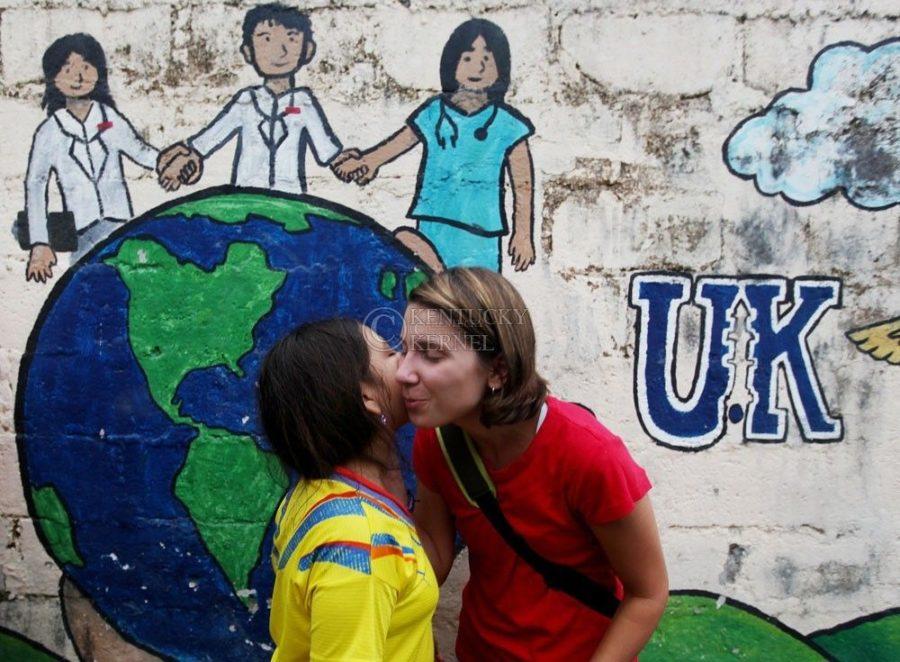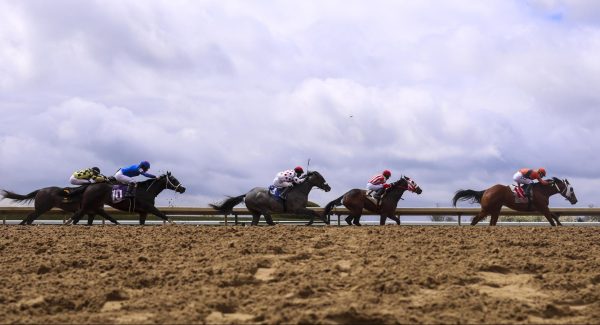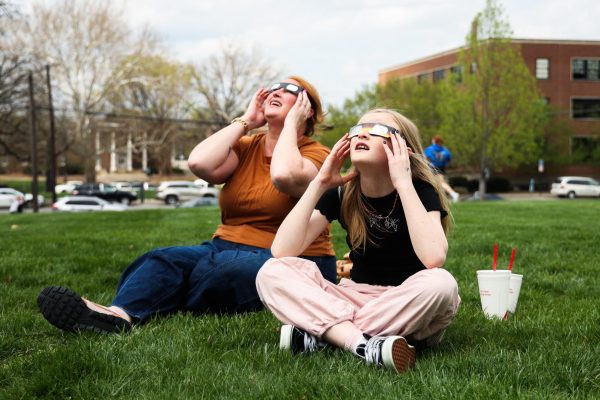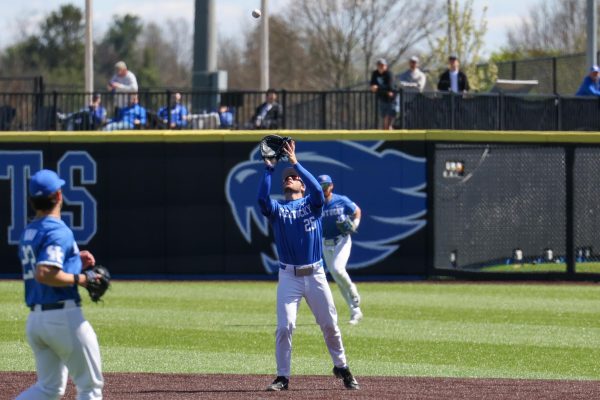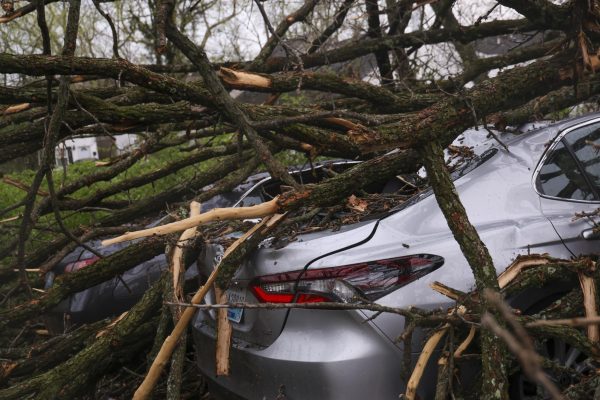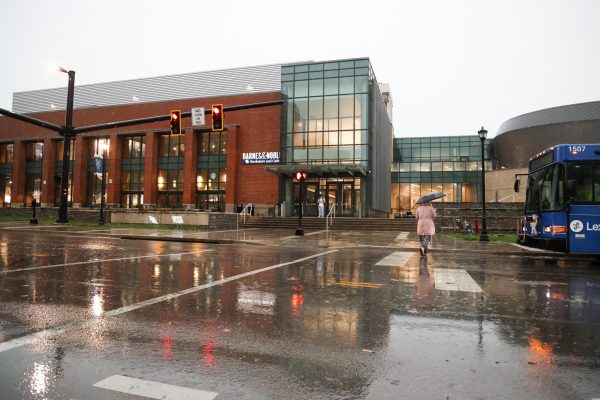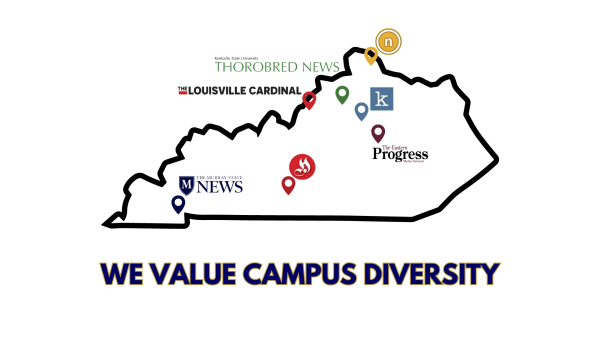A Universal Language
December 10, 2010
******
Dust flies up from the winding road, and puffy brown clouds hang over a tiny row of shacks scattered as far as the eye can see. A street dog races a truck past the porch where a leathery indigenous woman sits with a basket of strawberries she is selling for 25 cents a pound.
The dust clouds break and Dr. Tom Young smiles, throws open the door to the pediatric wing of the UK Clinic and snaps back across 3,000 miles to the land of fancy cars and fast food where he leads an organization focused on a far off region of simple resources and many struggles.
It is daily memories like these of Santo Domingo, Ecuador that fuel the actions of Young and the many other UK faculty, staff and students involved with Shoulder to Shoulder Global.
Young, a pediatrician at UK, began taking biannual brigades of pediatric residents to Santo Domingo in 2002 as a global health experience, but over the course of eight years it has grown into something much larger than he imagined. The organization has added a co-leader, Dr. Claudia Hophenhayn, established a year-round full-service clinic and has grown exponentially in size and support.
Northeastern Ecuador was paired with Kentucky for the medical mission through Partners of the Americas, a service organization aimed at matching volunteers with underprivileged areas in Latin America. Now, after investing thousands of hours and dollars into a pocket of the world half the size of Nevada, Young says that it has become his home away from home.
“I see it as coming home to family members,” he said. “I have friends there, even though my language isn’t what it should be in Spanish, there is still a connection between all the people I work and share with.”
The first group of pediatric residents Young brought along in 2002 included just six participants. In 2006, Young enlisted the help of Hophenhayn and the brigades expanded to more than 30 participants. But the group didn’t want to stop at just expanding in numbers; they wanted to make a lasting impact on the community.
“Our goal was to be different from other medical missions in the sense that we are providing sustainable care,” Young said. “We wanted to make a long term difference and impact on their overall quality of life.”
To accomplish that, Young, Hohenhayn and their team began building a year-round clinic available to all of Santo Domingo’s residents.
A brigade reunited
During the two different week-long brigades in 2010 the Shoulder to Shoulder teams educated and cared for roughly 2,000 patients. Most of the mission is done that two-week span, but work is done throughout the year to help provide for the communities needs.
Biology sophomore Mary Collins, the Shoulder to Shoulder Student Association president, is currently leading a fundraiser to help a single father with six children build a home. The clinic in Santo Domingo also takes toy donations from Kentucky to give to the community kids for Christmas.
For Santo Domingo resident Mónica Hidalgo, the clinic and medical brigades are making an irreplaceable year-round difference. Seeing a doctor is especially important for Hidalgo and her children because two of them are mentally handicapped.
“We are poor people here and this is what we need,” Hidalgo said in Spanish. “I am a single mother and I have to sell empanadas just in order to feed my three children. If the these doctors had never came here I would never be able to afford for my kids to see a doctor.”
The story of the Hidalgo family is a familiar one. About 75 percent of Ecuadorian families can’t afford to pay for professional medical care, Hophenhayn said. But it is the faces of these normal and natural everyday stories that leave an imprint on the hearts of the Shoulder to Shoulder volunteers.
In mid-September, participants from past brigades piled in Hophenhayn’s home for a potluck reunion and a chance to meet those involved in other trips. Hugs and laughs were exchanged as they shared stories about how they had been changed since their trip. A hush fell across the team members as they crowded in the living room to watch a slideshow of their summer.
But the group, eyes glued to the screen, didn’t see the single tear that trailed down the face of Physicians Assistant student Stefanie Brock as the smiles of Trinidad and Maria Farfan rolled across the screen, taking her back through time to a moment from her brigade in August that forever changed her, took her back to the bittersweet emotions that grabbed her heart when she watched a fellow human being see the sunlight for the first time in two years.
A lasting impact
Maria, 26, and her brother Trinidad, 27, were born with cerebral palsy, and struggle to leave their house because they don’t have the money to buy wheelchairs. Their mother, Consuela, takes care of them.
A reclining wheelchair has since been sent with a Shoulder to Shoulder brigade from Kentucky for Consuela Farfan and her children.
“All I can say is thank you,” Consuela Farfan said in Spanish to the group of physical therapists who came to the Farfan house to teach them to use their new wheelchair.
She said it’s surprising how much of an impact Shoulder to Shoulder’s actions have.
“It was so completely mind-blowing seeing how things so simple could change someone’s life,” Brock said. “It made me believe that small acts of kindness can and will be what changes the world.”
Young said one of the most difficult things to which people have to adjust is the lack of simple resources the doctors have to work with.
Although many of the patients had similar issues to those seen in the U.S. such as asthma or flu, many doctors encountered problems that they couldn’t have predicted.
UK Physical Therapist Anne Harrison said it was heartbreaking for her to see overused muscles in children having to do hard manual labor for their families.
UK pediatric resident Jay Meehan said that dealing with these issues made a great learning experience for him, especially for his career.
“When anybody you find has a symptom you can treat that’s a great thing, that’s an accomplishment,” Meehan said. “But compassion goes a long way. Sometimes that is all people need. And that’s a universal thing. It’s a pretty incredible thing to know and realize, that medicine really is a universal language. It’s the same everywhere, whether the need be a touch or a healing remedy.”












































































































































